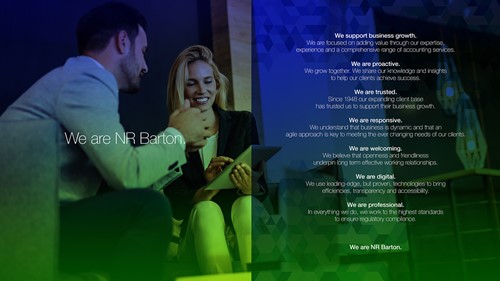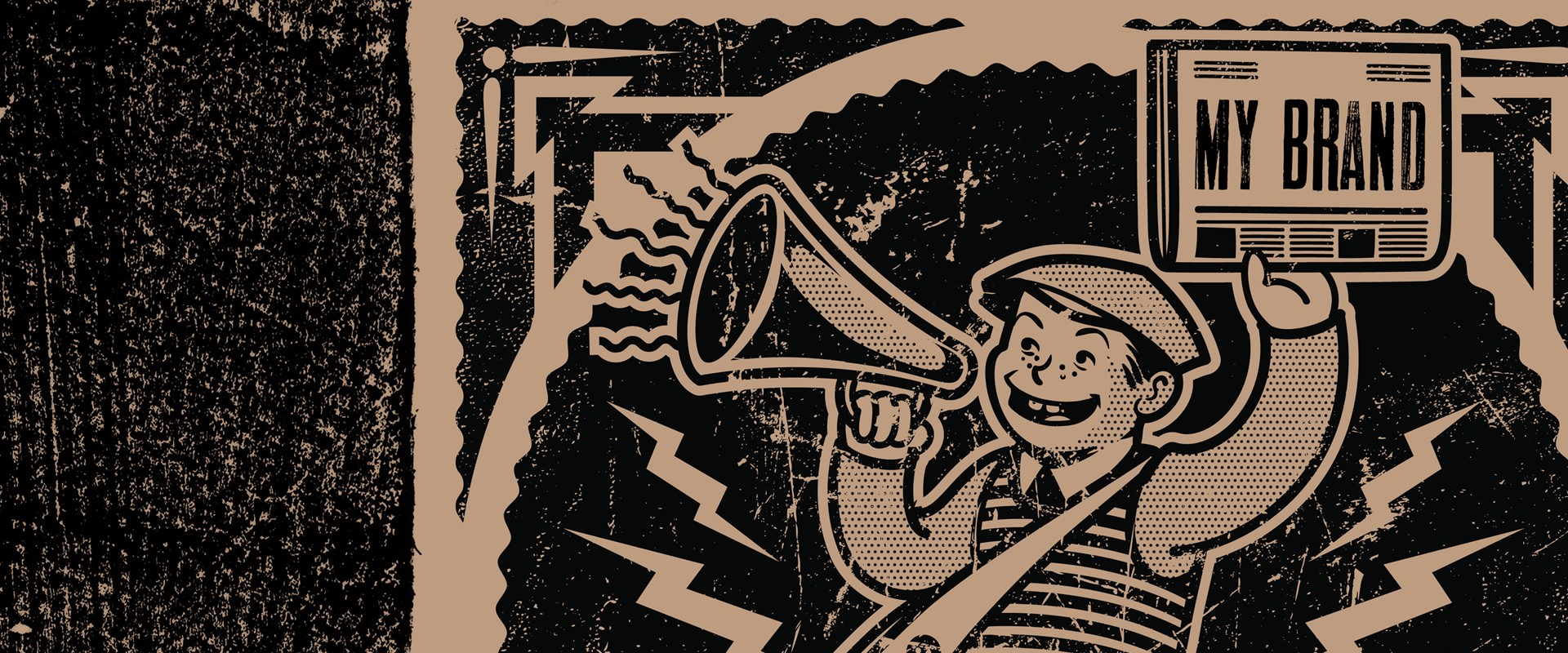Your brand voice defines the personality and tone of how you communicate with your audience, whether that’s customers, prospects or associates. In order to connect with them it needs to be, above all, authentic. Because a lack of authenticity and honesty becomes obvious pretty quickly as you’re not ‘walking the talk’ and your deeds will find you out. A brand voice should also be unique, because it’s yours, not someone else’s.
So how do you find yours?
Start with a bit of research and look at how other brands form theirs. In fact it’s good practice to look at the big brands even if it kind of feels that they’re not relevant because of their scale and success, but they have achieved this success partly because they’ve mastered things like defining a brand voice. Plus they’ve invested huge sums in branding and marketing so why not take advantage of their investment? Why not look at the likes of Nike, Apple, Coca Cola, Facebook, Google and your industry leaders and learn lessons from the best? This exercise isn’t about plagiarising them though, which takes us back to the first point about authenticity, and you now need to think about your own brand’s unique character.
There’s lots of way to do this but perhaps the easiest is the time-honoured use of post it notes. Brain-dump all the words and phrases that you think best encapsulate your values, ethos and approach onto the way you deliver and the literal things that you actually do or make. Ideally this a group exercise as everyone will have slightly different ways of defining the same attributes - sometimes it can even highlight a major difference of opinion which might even lead to arguments but it’s best to flush these out at the start. Post-its are then easy to organise into groups of similar types of values or descriptions, including each individual's variations. Then another simple technique is to give everyone in the group a few little coloured dot stickers, 5 or 6 each, so they can then ‘vote’ for what they think are the 5 or 6 most important attributes, the post-its with the most stickers are then placed at the top. Again, there may be differences of opinion or even conflicts here if the votes are spread, but this should trigger debate which can be both healthy and is best thrashed out sooner rather than later.
The post-its provide a set of key words or phrases that have also been prioritised in terms of importance from your perspective. It’s important that you understand how and if these align with your target audience, which generally involves some research and can be as exhaustive as time and budgets allow, the general rule of thumb being the bigger the sample the more accurate the findings. There are many ways to carry this out of course, bigger brands with big budgets might undertake a series of focus groups involving different demographics and even behavioral psychologists as well as marketers. However, just anecdotal chats with friends can have a value but you need to be mindful that they're not too nice and are just telling you what they think you want to hear. Perhaps the most cost effective are online tools such as Surveymonkey which allows you to create questionnaires, invite responses by email and then distribute. The findings will inform you if your proposition resonates or not, and if your focus aligns with their priorities allowing you to adjust and fine tune the messaging before defining it.
That definition needs to be well written and get your key messages across succinctly, with the emphasis on the prioritised core values you’ve now agreed. The tone needs to appeal to the target audience, so use the same kind of language they do, and reflect the character of the brand. For example, are you sentences short and sweet like Apple’s direct approach? Have you got a technical style like Audi? Inspirational like Nike? Or involving like Airbnb? There are any number of formats for this, we usually write an 'elevator pitch' which is a 30 second summary of what a company does and how it does it - essentially a more informal version of the out-dated 'mission statement'. It doesn’t have to be recited verbatim, but everyone in the organisation should be able to provide a version whenever they’re asked ‘where do you work then, and what do they do?’ The concept apparently originated in the offices of Vanity Fair in the nineties; a reporter kept attempting to pitch a story to the editor-in-chief but couldn’t pin him down so she waited until they were taking the lift, then jumped in with them as she knew there was nowhere to run and she’d have his undivided attention. She also knew this was going to be a very brief opportunity so she boiled the idea down to the bare essentials so it could be explained in 30 seconds.
Consistency and repetition play a big part in building the brand persona so it’s important to encapsulate this work within your brand guidelines. It’s a lot of effort and investment in time, so you’ll want to protect that investment by capturing it and making it available to everyone in the organisation so that everyone’s singing from the same hymn sheet. This is vital because your people, especially those in customer facing roles, are the ones who will be communicating and setting the brand voice, so they need some coaching to understand its importance and what you’re trying to achieve. They also need access to branded resources to make that task easier, so create a shareable guidelines document and put all the brand assets (logos, templates, images) in some form of easily accessible shared drive, such as an internal server or system like Dropbox. Larger organisations may invest in brand asset management tools which provide more sophistication around access, permissions and tracking.
Finally, you don’t need to to this on your own. There are mentors and specialist agencies who can help you through the process. Here are two recent case studies of projects we’ve worked on to help define their brand voice.
Pitalia
Are a new private equity investment house focused on real estate and commercial investments. With sizeable funds to invest the business has a stated approach which is about sustainable and ethical investing as well as achieving significant returns. Again working closely with the business owner and the company directors, we have created a new statement of approach defined within The Pitalia Agenda, an elevator pitch and a new streamline.
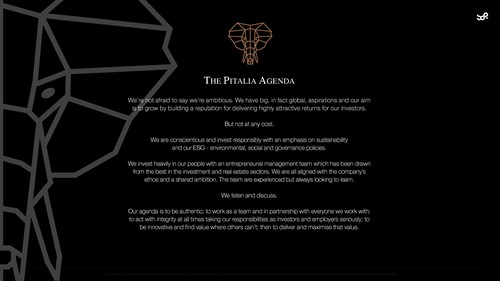
The Pitalia Agenda
We’re not afraid to say we’re ambitious. We have big, in fact global, aspirations and our aim is to grow by building a reputation for delivering highly attractive returns for our investors.
But not at any cost.
We are conscientious and invest responsibly with an emphasis on sustainability and our ESG - environmental, social and governance policies.
We invest heavily in our people with an entrepreneurial management team which has been drawn from the best in the investment and real estate sectors. We are all aligned with the company’s ethos and a shared ambition. The team are experienced but always looking to learn.
We listen and discuss.
Our agenda is to be authentic; to work as a team and in partnership with everyone we work with;
to act with integrity at all times taking our responsibilities as investors and employers seriously; to
be innovative and find value where others can’t; then to deliver and maximise that value.
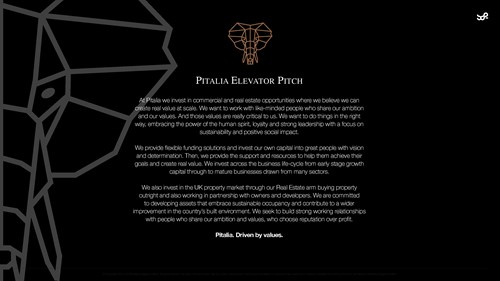
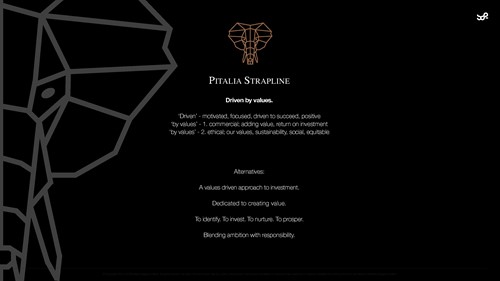
The Pitalia Strapline
Driven by values.


NR Barton
Established in the 1950s, NR Barton were an atypical small town accountancy practice. However a new management team has a serious ambition to grow the business into larger regional player. They contracted bd2 to redevelop the brand and all its assets. Working closely with the partners ands their senior leadership team, including workshops, we’ve helped to create a new and more modern visual identity along with a brand tone of voice, key statements and strapline which are defined in a new brand guidelines document.

Barton 'why' statement.
We support business growth.
We are focused on adding value through our expertise, experience and a comprehensive range of accounting services.
We are proactive.
We grow together. We share our knowledge and insights to help our clients achieve success.
We are trusted.
Since 1948 our expanding client base has trusted us to support their business growth.
We are responsive.
We understand that business is dynamic and that an agile approach is key to meeting the ever changing needs of our clients.
We are welcoming.
We believe that openness and friendliness underpin ling term effective working relationships.
We are digital.
We use leading-edge, but proven, technologies to bring efficiencies, transparency and accessibility.
We are professional.
In everything we do, we work to the highest standards to ensure regulatory compliance.
We are NR Barton.
